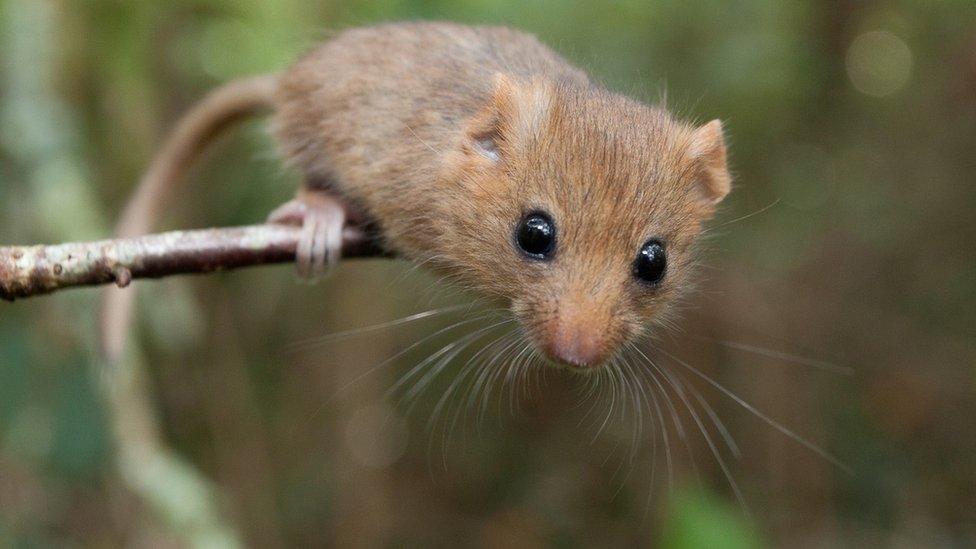Rewiliding: 1000 dormice have now been released into the wild
- Published
- comments

This is a Hazel Dormouse
One thousand hazel dormice have now been released into the wild as part of a reintroduction scheme.
Over the years dormice have disappeared from 17 different counties in England.
Scientists agreed that the only way to get more dormice to settle back into the wild was to breed them in a zoo and then take them back to the wild.
After some success, the one-thousandth dormouse from this study has made its journey into the woodlands!
These dormice were looked after by the team and then released into the wild
Why are people working so hard to protect dormice?
Aside from being super cute, hazel dormice are an endangered species in the UK.
This means they are classed as rare and close to extinction.
Ian White from wildlife charity People's Trust for Endangered Species (PTES) explained that when he first started working for the charity there were five different species of dormice and now there is only one.
He said that their population decline is due to the mice not having anywhere suitable to live.
Ian explained: "It's a decline in woodland and hedgerow management. Dormice live in the shrub layer of woodland, and in many areas that layer has been stripped out, or the forest has been left to grow up and shade out the understory."
Baby dormice are the same size as a raisin!
How have the dormice been re-introduced to the wild?
Scientists from the University of Cumbria worked with PTES and Natural England on a breeding programme with the aim of releasing all the captive-bred babies into the wild.
The team brought 15 pairs of Hazel dormice - that's 30 altogether - to a secret location in Lancashire where they were looked after by the research team.
The mice had been bred at London Zoo where they were kept in isolation for nine weeks and keepers made sure they were in tip-top health before they started their journey.
These are the special nesting boxes for the dormice
They were put in specially-made dormouse nest boxes to make the 250-mile journey to Lancashire.
Dr Deborah Brady, from the University of Cumbria, said: "Dormice belong here, but 50% of the population has been lost in just the last 20 years, which fits in with the loss of biodiversity we're facing more broadly.
"And this is a species that we can practically help - we can do something about that."
200 closely monitored dormouse nesting boxes have been set up in woodlands as well as special footprint tunnels placed along branches for the mice to use when in the hedges and undergrowth.
It's hoped by all those involved that there will be dormouse babies in the woodland by summer!
What's next?
The team hopes to do another re-introduction next year.
Dr Brady said: "We should end up with a population of possibly 70 or 80 animals in three very closely connected woodlands. Those animals will hopefully breed and we'll be watching that population really carefully."
Mr White from PTES said the aim is to have dormice across whole landscapes not just individual woodland.
- Published20 November 2019
- Published27 July 2017
